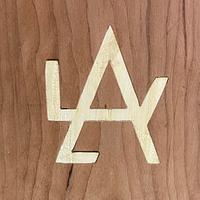Share your craft projects
Make new craft buddies
Ask craft questions
Blog your craft journey
The thing that makes hot hide glue so great for veneer is that as it cools down, it gels. The hammering process basically forces the excess glue and trapped air out through the edges of the veneer. You press the glue out towards the edges with sort of a squeegee action. As the glue gel, it starts to lock the veneer in place and the vacuum created by the hammering action causes the atmospheric pressure to act as your clamping mechanism. The gelled glue prevents air from being sucked in and the veneer is locked in place. The gelled glue even seals cracks in the veneer the same way to prevent air from getting in that way as well. Of course this is also what makes it difficult to use it for larger pieces of veneer, at least for hammering. You have to get all of the glue pressed out before it cools enough to gel. For larger panels, they often us a heated press to lengthen the time. You can see a heated press being used for some smaller marquetry panels in the video below.
The video that convinced me to try hammer veneering for the mirror I posted above was this video by Shipwright (with plenty of advice from him as well). It really is as easy as he makes it look. That doesn't mean that it doesn't take some practice but for smallish projects, it doesn't take a huge learning curve.
The video that convinced me to try hammer veneering for the mirror I posted above was this video by Shipwright (with plenty of advice from him as well). It really is as easy as he makes it look. That doesn't mean that it doesn't take some practice but for smallish projects, it doesn't take a huge learning curve.
--Nathan, TX. Hire the lazy man. He may not do as much work but that's because he will find a better way.









